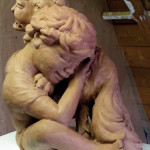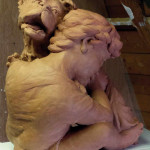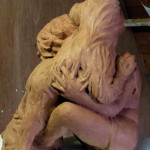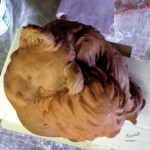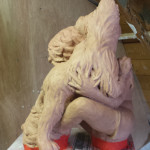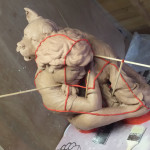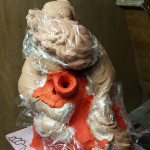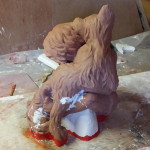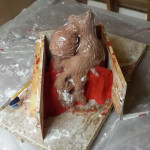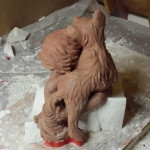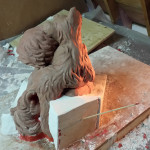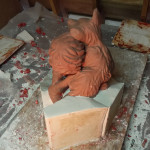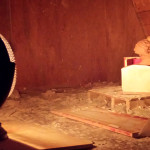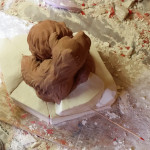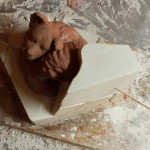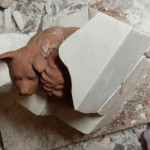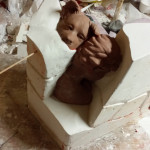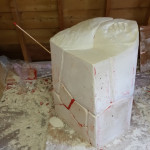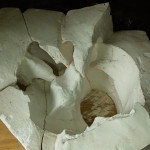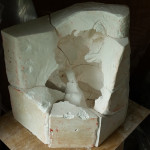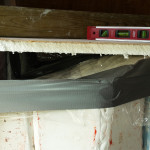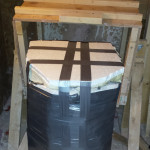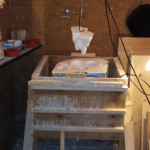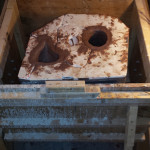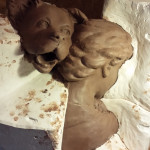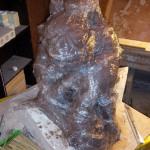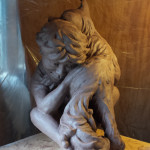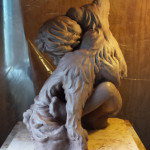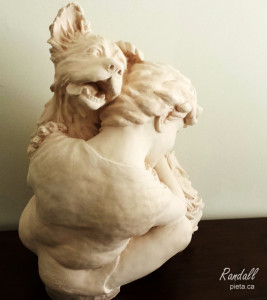Michelangelo was disinterested in portraying animal life. Search high and low, and you will only be treated to a small selection. An uninspired collection who’s purposes is to support some larger allegorical tail.
Rothschild’s collection of Bronze Panthers, supporting the nude male. Michelangelo’s obsession.
The Sistine Chapel’s Adam & Eve – The Fall; The Serpent is portrayed as a woman, conflating women with temptation.
The Sistine Chapel’s Jonah, With the Prophet Jonah’s thigh being mouthed by a common Mediterranean Dentex fish
San Lorenzo’s The Night; with the Marble Owl standing on guard, shielding prying eyes from Nights thighs.
All in all, not his best work.
Today, we understand the combined interdependence of nature with human kind. Wild life is no longer just a supporting structure. In this way, I really appreciate Saint Francis of Assisi and his kinship with our wild wonderers. For Francis, God’s love of nature was reflected in all of creation.
My favourite story attributed to him is how he tamed the Wild Wolf of Gubbio. A terror of an animal described larger than life and may have inspired Grimms’ Riding Hood tale.
This creature killed and ate any unfortunate creature that wandered alone along its path. Be it pig, lamb, or man. Leaving the towns folk quivering at night. In walks Francis, with disregard to warnings, set off into the mountains in search of the wolf. He had faith in that all that was needed was a little mutual understanding. At first sight, the animal charged, just as Saint Francis held out is arm. In that moment, perhaps startled by Assisi’ calm demeanour, the wolf changed his gate from that of attack to rambunctious play… The two become the best of friends, brothers for life.
Now that’s a story… and this is the motivation behind my next statue that captures this very moment.
“Brothers”
Here I have sculpted Saint Francis and the Wolf of Gubbio at the moment. Two brothers caught in the momentum of a wrestlers tackle…. In the process, these two are once again young, as only youth can be blind to life’s cares and struggles.
This Maquette has been crafted in polymer clay, with the next step being to design and pour the plaster mold….
Plaster casting St Francis, Brothers, will be my most challenging plaster mould to date. To keep my compact rolling design I’ve compressed the wolf along side and above Francis. Then to emphasize the tumbling motion, I needed to show all limbs including those sandwiched between the pair. With so many undercuts to consider, I need to fully plan each piece well in advance, knowing how they pull away from each other.
Starting from the least accessible section and then moving out and around I build form barriers using plasticine and wood. Cleaning each finished puzzle piece before moving on to the next in line. Plaster wont stick to modelling clay or wood, but will lock onto itself, so don’t forget to apply petroleum jelly to exposed sections.
Following this process, each section follows the next. And as I’m sure you can appreciate, it is very easy to lose track of how each piece relates to the other. What direction they will need to pull apart. With this in mind, I drill pilot holes into the sections indicating the direction they will need to move. A wooden dowel serves as an arrow to guide me. With almost a dozen pieces, this step is key; unless your memory is much better than mine.
The pouring process takes weeks, and this time of year, nights can get frosty. Wet plaster will crack if frozen so don’t forget to heat the project when the mercury dips below freezing.
Around and around she goes with the last piece saved for the nose. I’m strangely proud of my plaster moulds; not sure why. Its not an art… more of a craft or even science. But with each completed project, I sign the work with my palm print. Its now, somehow, a piece of me
With the right amount of low heat, movement of air and reduced humidity, the plaster will be ready for the next step.
Plaster mold making is a skilled craft all its own. Many artist prefer to pass this on to trades persons rather than tackling the complicated and time consuming task. For me, I see this as a challenge, and besides, I’m a bit of a control freak. Maybe I’ve got trust issue, but I don’t want anyone else handling my statue. Michelangelo had originally hired the services of a foundry to cast and pour his larger than life bronze statue of Pope Julius II. Complaining that the quality was so poor, that far more time was spent correcting the pocked marked and pitted surface than if he had thrown it away and started over from scratch. I’m sure quality control has improved much since the Renaissance… But still, I like to be hands on.
As with all my other statues, each mold is unique and requires on-the-spot adjustments… ‘Brothers’ will need a spray foam top to ensure it lays flat within the tipping box.
With the help of silicon and duck tape, the mold is ready for slip or pressed clay. As this is my first cast, I have chosen to press the clay to ensure the correct thickness. With variations from a thicker bottom to thinner top.
The advantage of pressed clay is that the plaster pieces can be removed at my own pace…. The thicker clay is stronger and so, far more forgiving. With a poured slip, often cracks or stress fissure will open up as the clay shrinks and pulls away from the surface of the mold. With thicker pressed clay, I can effectively take several days to slowly move around the statue and remove each piece while working the clay surface.
The clay can be worked and smoothed until it’s perfect. This is where you can really play with shape, textures and colours. For this first rendition of Brother, I have chosen a light brown coloured clay and have chosen a fired temperature that best bring out a light tan; cone 5. Finished with a lacquer preservative Brothers is now complete. St Francis and the Wolf are forever captured in this playful tackle.



